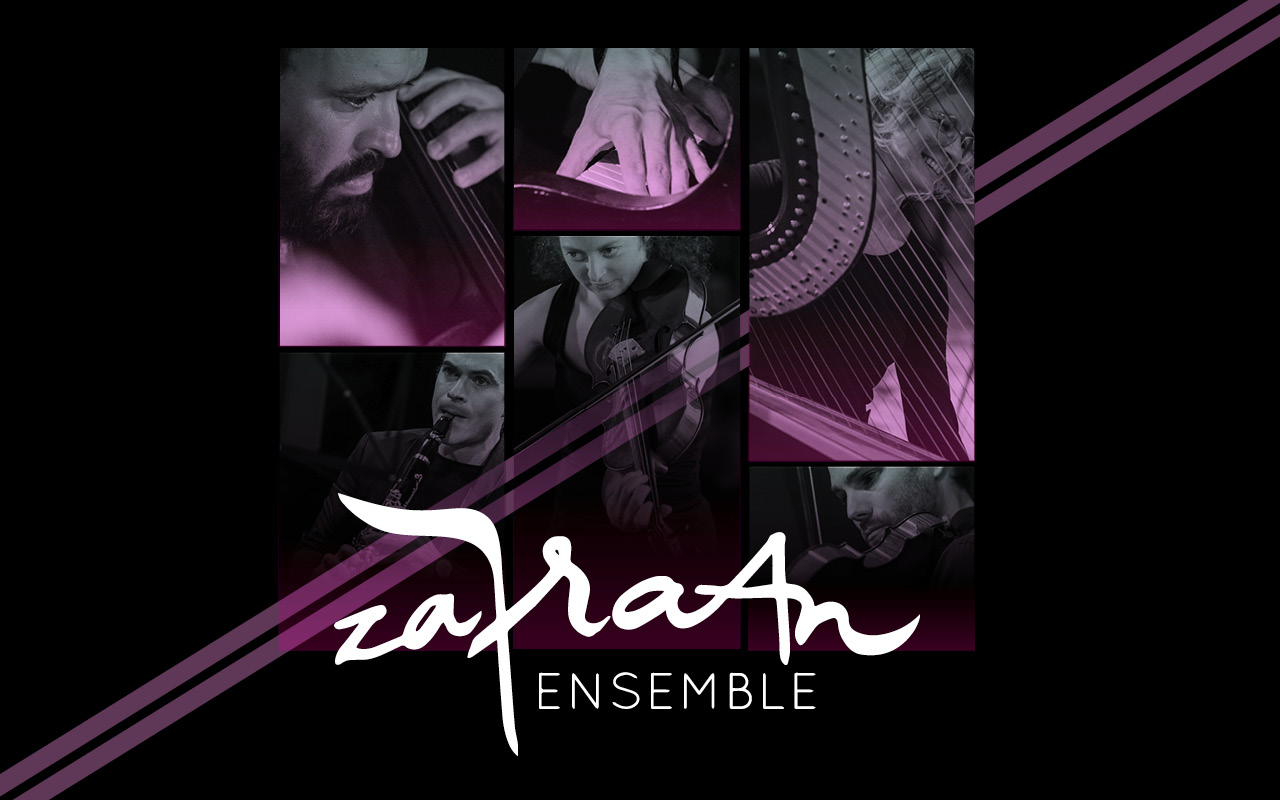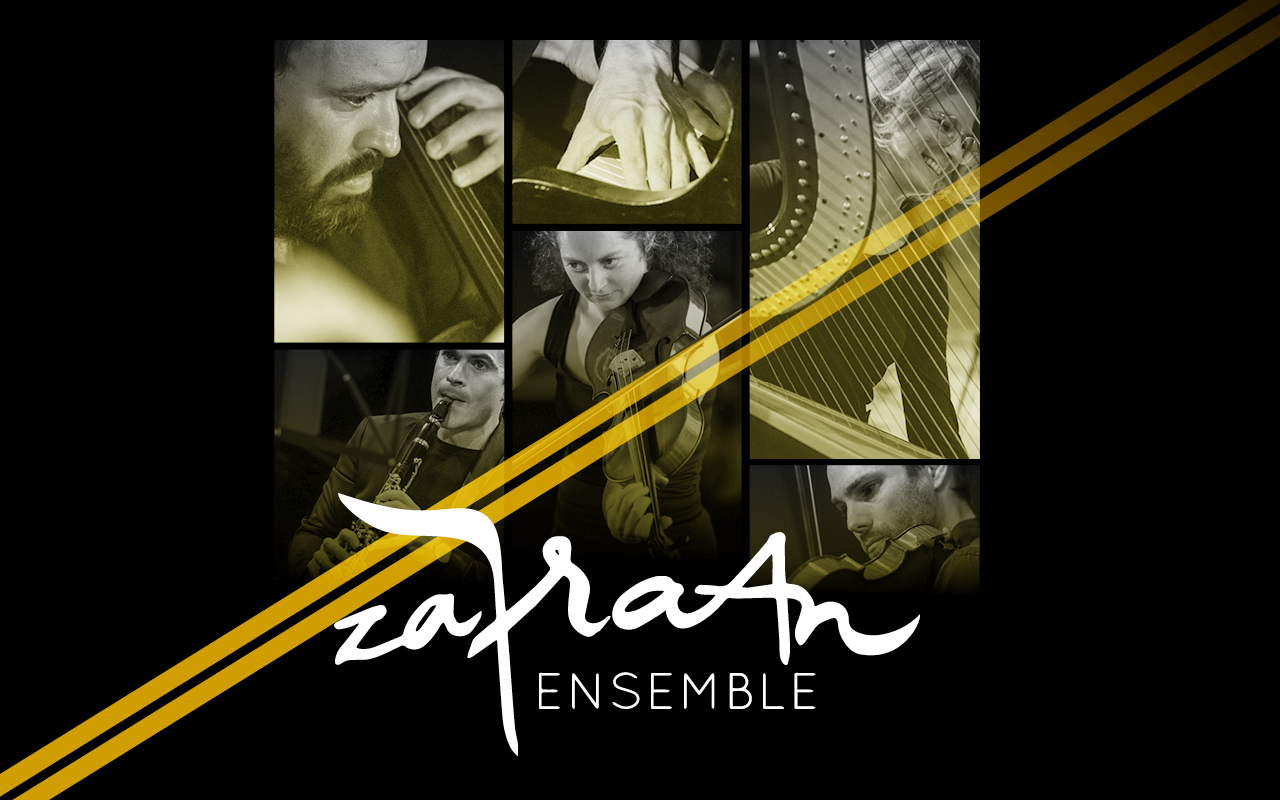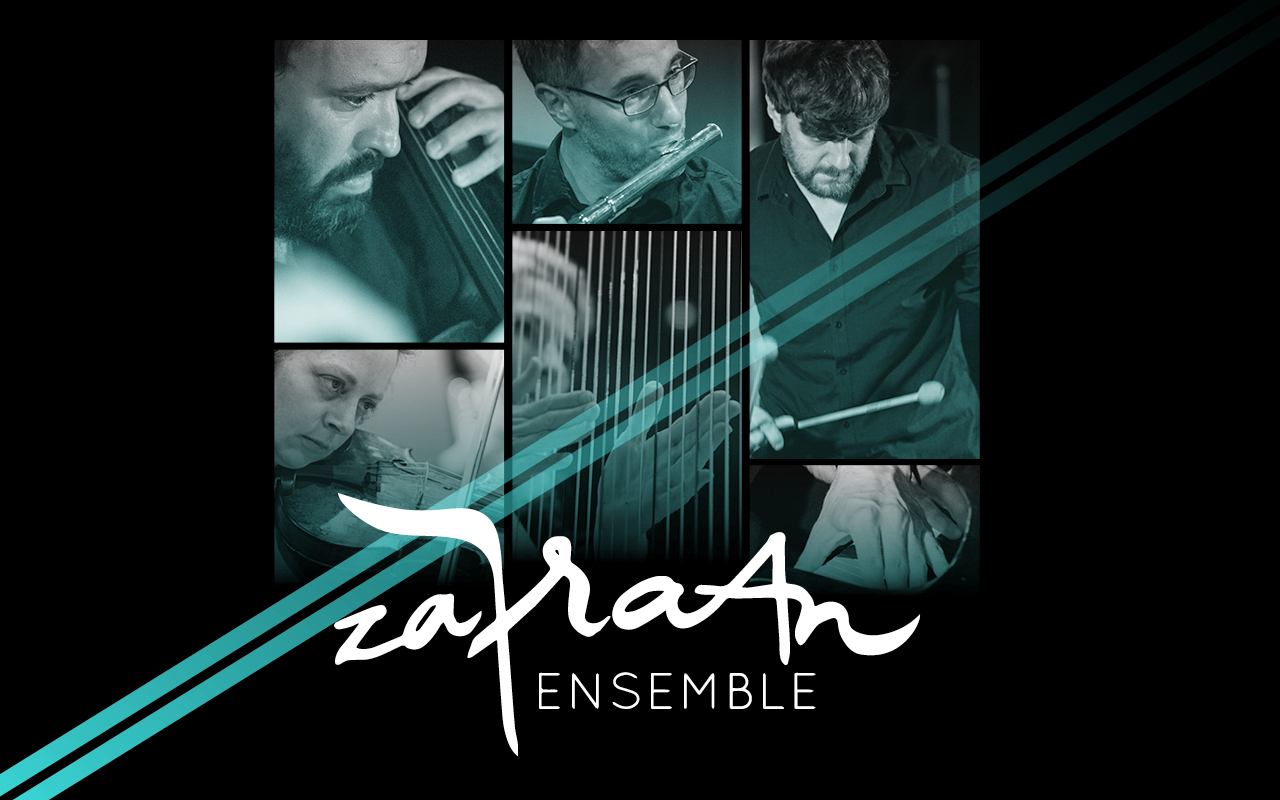With a reference to the novel “On the Road” by Jack Kerouac, we present a selection of pieces by composers who have continually amazed us with their outstanding language in our shared musical journey over the last few years. A program like the flower collection you take home with you as a child.

Claude Vivier (1948-1983): Pulau Dewata (1977)
Claire-Mélanie Sinnhuber (*1973): Tracasseries (2006)
James Tenney (1934-2006): Beast (1971)
Fausto Romitelli (1963-2004): Domeniche alla periferia dell’impero(1996-2000)
Zygmunt Krauze (*1938): Aus aller Welt Stammende:Teil: Molto espressivo, molto rubato,
molto vibrato (1973)
Daniel Eichholz (*1978): Habakuk 5 „the Oakwood Maze“
(UA,2021)
Terry Riley (*1935): in C (1964)

Written by a friend for his own wedding, „Ona“ is a short, unusual and beautiful speech. It’s the starting point, but it’s not at the start. After the wedding – dances, maybe wild. Before: a walk in John´s melody, then – a cry? That’s Manuela´s solo cello piece, discovered at midnight. You’ll probably hear some signs of spring with Salvatore´s black bird.
What characterizes this couple’s journey? I’ll leave you to tell me. Jonah and Zeynep form and guide their path for a while. Is it your wedding, a story about an imagined couple, or is it just that you went through Wedding and got caught up in some special sounds?
John Cage: Melody No. 1 (1950), violin and harp
Manuela Guerra (1996): Clamor (2021), violoncello
Salvatore Sciarrino (1947): Fauno che fischia a un merlo (1980), harp and flute
Hèctor Parra (1976): Ona (2006), flute and viola
Iannis Xenakis (1922-2001): Dhipli Zyia (1951), violin and violoncello
Halim El-Dabh (1921-2017): Sonic No. 10 (1955), percussion
Jonah Haven (1995): Another Ditch (2018), flute, viola and percussion
Zeynep Gedizlioğlu (1977): Ungleiche Gleichungen (2006), violin and clarinet
Ruth Zechlin (1928-2007): Mobiles für Harfe (1978), harp solo

Zafraan’s new concert series “On the Road” takes us into the middle of eccentric dialogues and encounters. A single point explodes out of nowhere in Christophe Bertrand’s “Aus” and becomes a bubbling organism. We are returning to the path we started last autumn: Claude Vivier and Daniel Eichholz are performing new works in new surroundings. Solos and duos remain energetically in dialogue until the evening leads us together to a listening silence with “Lauschgut” by Charlotte Seither.
Christophe Bertrand: “Aus” (cl, sax, piano, vla) (2003)
Daniel Eichholz: “Habakuk 1” (2021) (2’), percussion
Claude Vivier: “pièce pour violon et clarinette” (1975)
Georg Katzer: Dialog Imaginär 6“ Stockendes Lied“ für Tenorsaxophon und Tonband (1983)
Iris ter Schiphorst: “Hi Bill!” for solo bass clarinet (2005)
Beat Furrer: „Presto” for flute and piano (1998)
Pär Lindgren: “Beep-Ooh” for clarinet and percussion (1995)
Charlotte Seither: „Lauschgut” (2018/19 for (inside) piano

Very subtle quiet sounds, changed by a wave of electricity, before extra-terrestrial presence invisibly surrounds us, that’s what we, already born human beings, might hear listening to the first three pieces by Marta Liisa Talvet, Sofia Gubaidulina and Ádám Bajnok. But what does a baby, still in its mother’s belly, hear from the sounds that we share in our “external world”? In “9:30 pm, Lullaby”, which will be premiered in this concert (!), Lin Yang draws with us this imaginary picture.
Coming back to our “direct” hearing experience and before leaving each other for the summer, there is one more, very important place where we want to meet you: Claude Vivier’s Paramirabo, will you be there?
Marta Liisa Talvet (1998): A Dream of Blowing Glass (2021) (fl, hrp, sax)
Sofia Gubaidulina (1931): II. aus “Fünf Etuden“ (1965) (perc., db, hrp)
Ádám Bajnok (1992): Пикник (Piknik), deutsche UA (2023) (fl, cl, vl, vlc)
Lin Yang (1982): 9:30 pm, Lullaby UA (2024) (tutti Zafraan)
Claude Vivier (1948-1983): Paramirabo (1978) (fl, vl, vlc, pno)

« Glissade », that could be the title. We enter the concert hall and we’re taken in this huge slide to land in – in a logical machine world?
But the title might as well be « Sandwich » as the bass clarinet stands there, alone and intense in Brett Dean’s Confessio, between two broader program parts…or what about « B.B. » which would stand for « Ballade for a Bulldozer »? Yes, we will be playing that too, not to mention Sofia Gubaidulina’s sonata and Wolfgang Rihm’s In nuce.
No, let’s stick to the original idea: this will be the « Cadavre Exquis » concert. And how does it sound?
James Tenney (1934-2006): Glissade: I. Shimmer (1982)
Iris ter Schiphorst (*1956): Transformationen IV (2024, WP)
Version for amplified violin and playback
Sofia Gubaidulina (*1931): Sonate für Kontrabass und Klavier (1975)
Brett Dean (*1961): Confessio (2017)
for bass clarinet
Wolfgang Rihm (*1952-2024): In nuce (1994)
for string trio
Iris ter Schiphorst: Ballade für einen Bulldozer (1989) (WP Berlin, 1990)
Zafraan Ensemble (2009;-) Cadavre Exquis (2024, WP)

Can you hear it? Is this huge instrument making any kind of sound whatsoever?
Wait a little … yes, yes, definitely some loud animals are now crawling out of it. Don’t miss them, they never stay for long.
So now that they’ve gone, two violins have space for a dance in the middle of the wilderness.
Meanwhile, in a theatre, two naked people start to dress very slowly. Not quite decided. Saxo and harp unveil it all, the theatre, the couple and the crazy real stories. They end up turning into –
well, it’s not quite possible to write this here. Why then, would scent and music exist?
Oscar Bianchi, ”Docile Ascesa” (2015) for double bass
Chrysoula Vernadaki, ”Rebetiko” (UA) for two violins
Mauricio Kagel, ”Grand Duo” (1988) for saxophone and harp
Clara Iannotta, ”Limun” (2011) for violin, viola and two page turners
